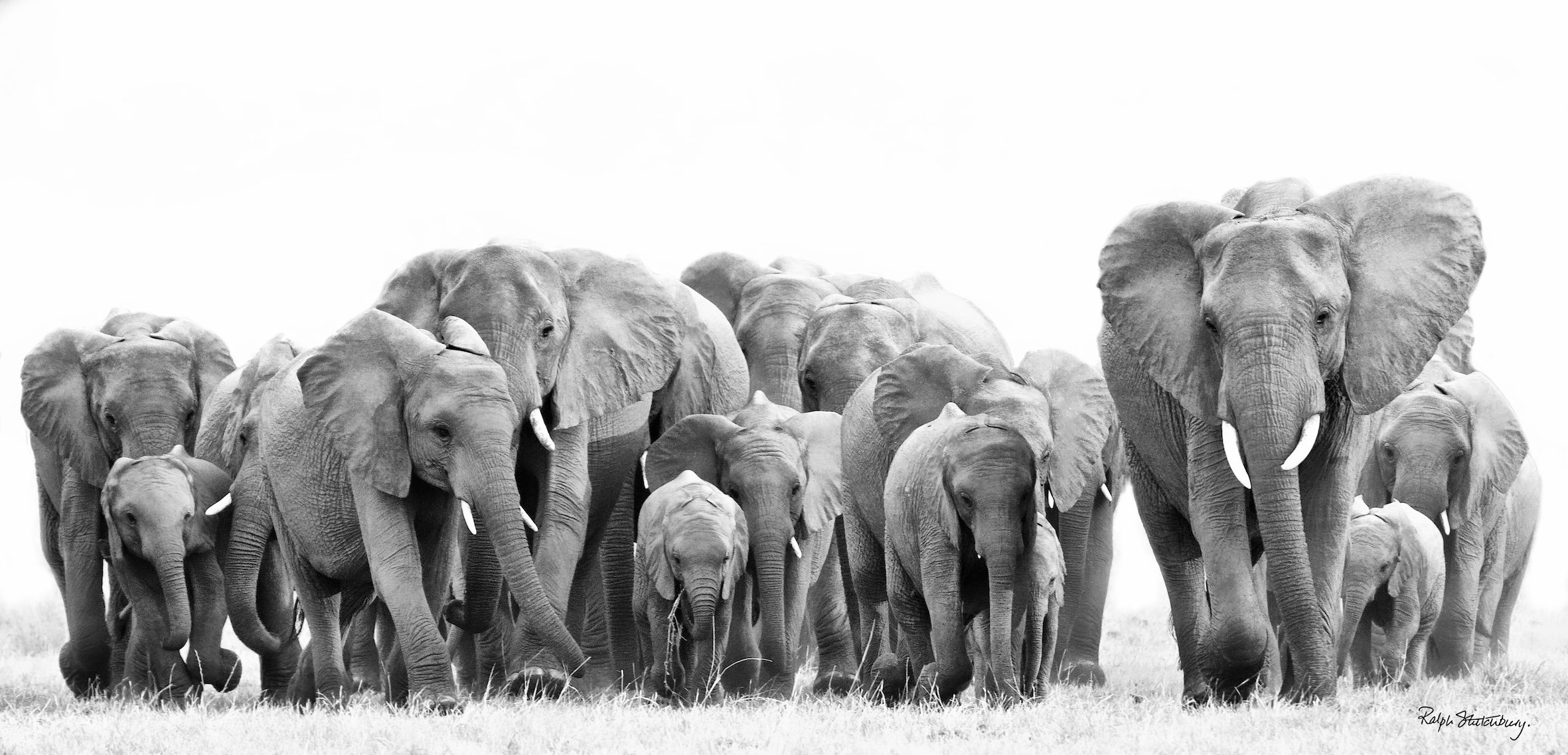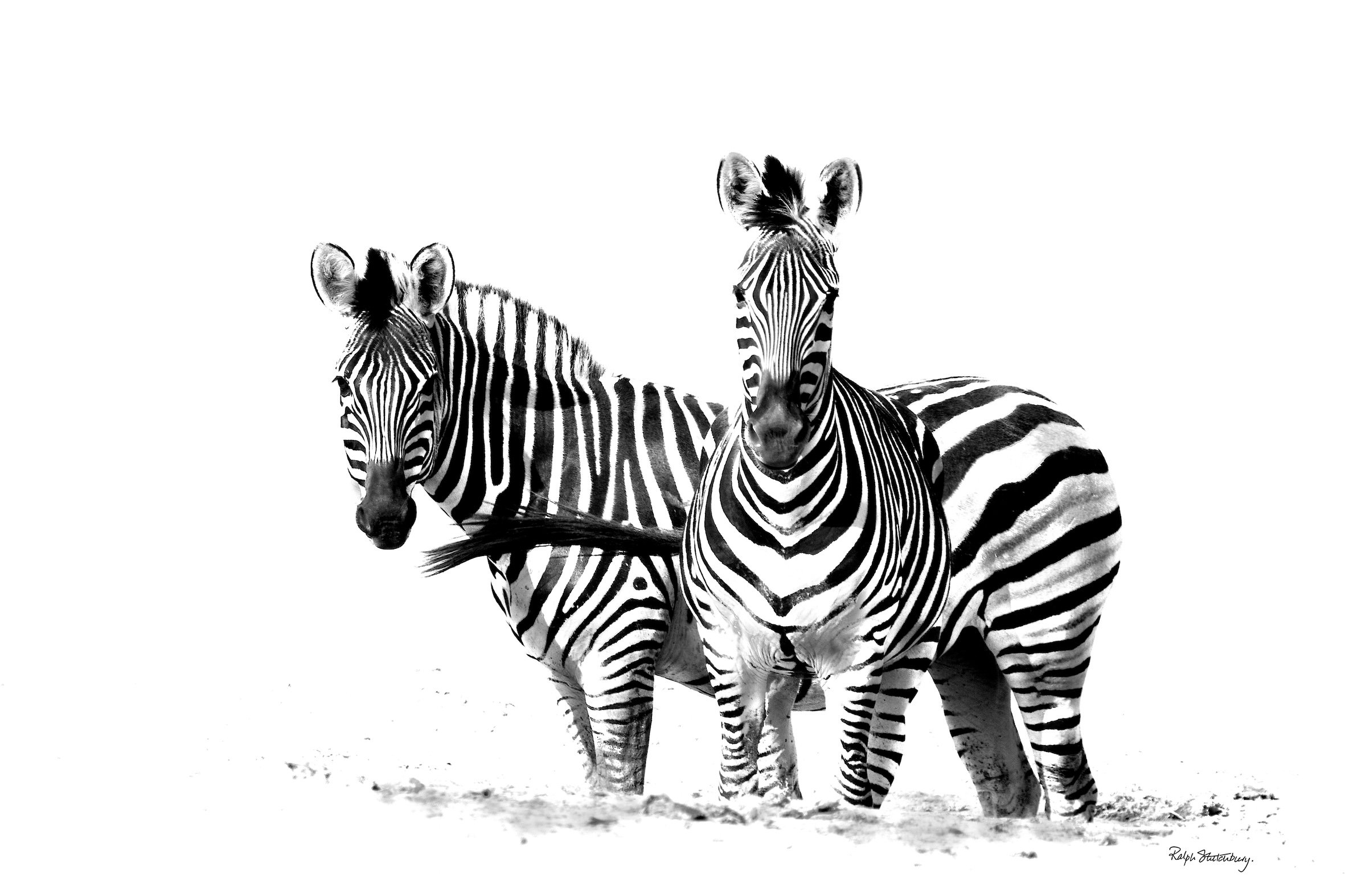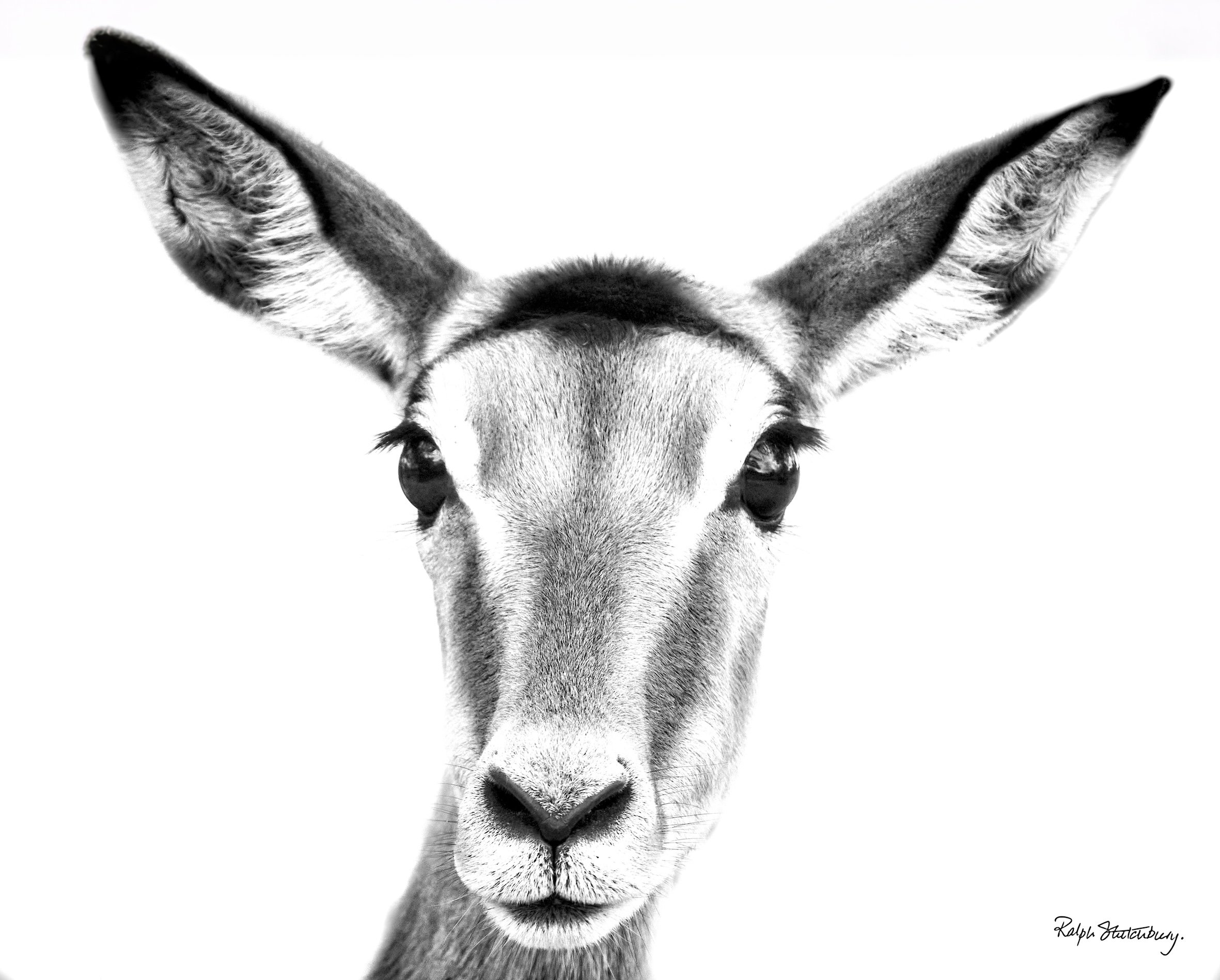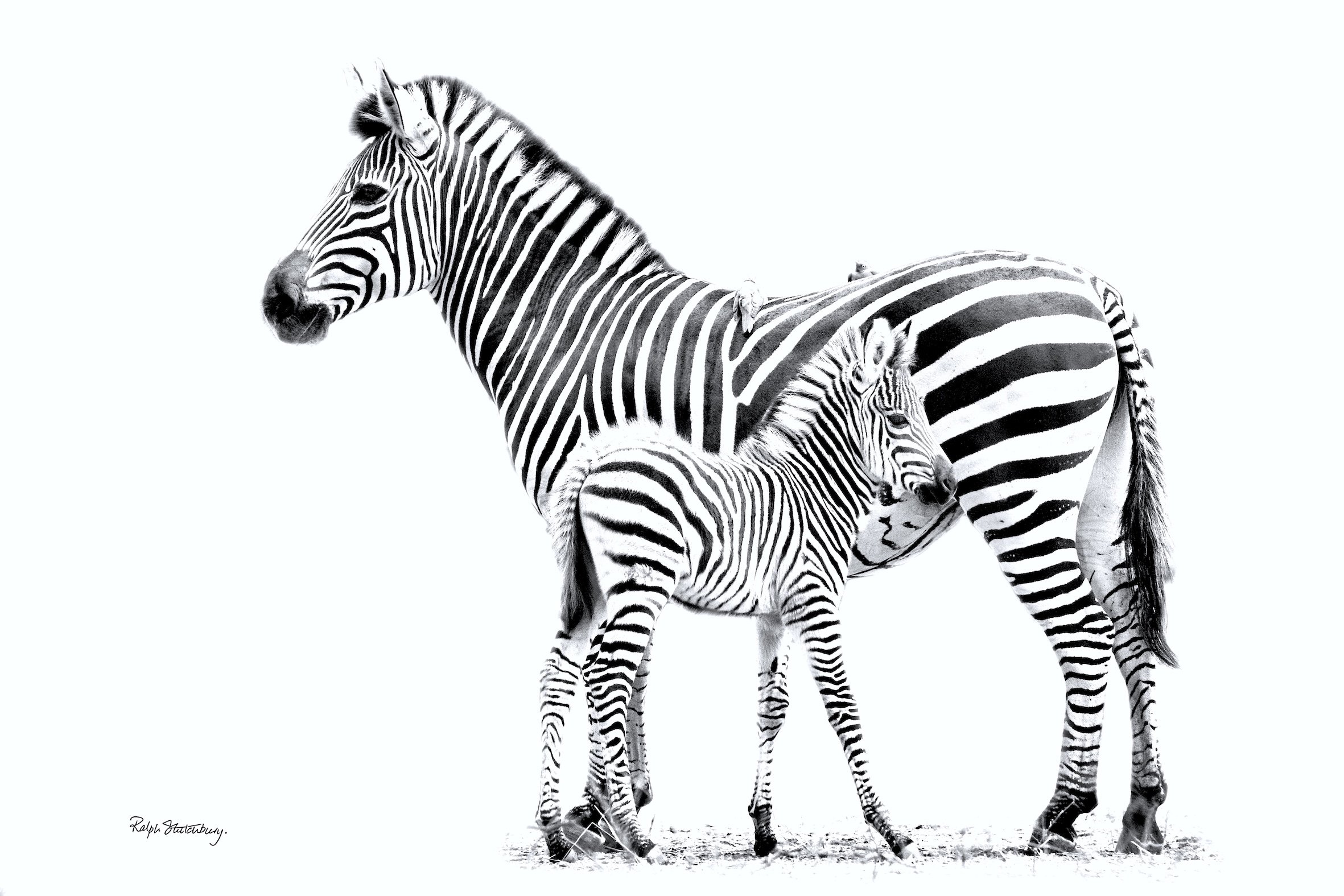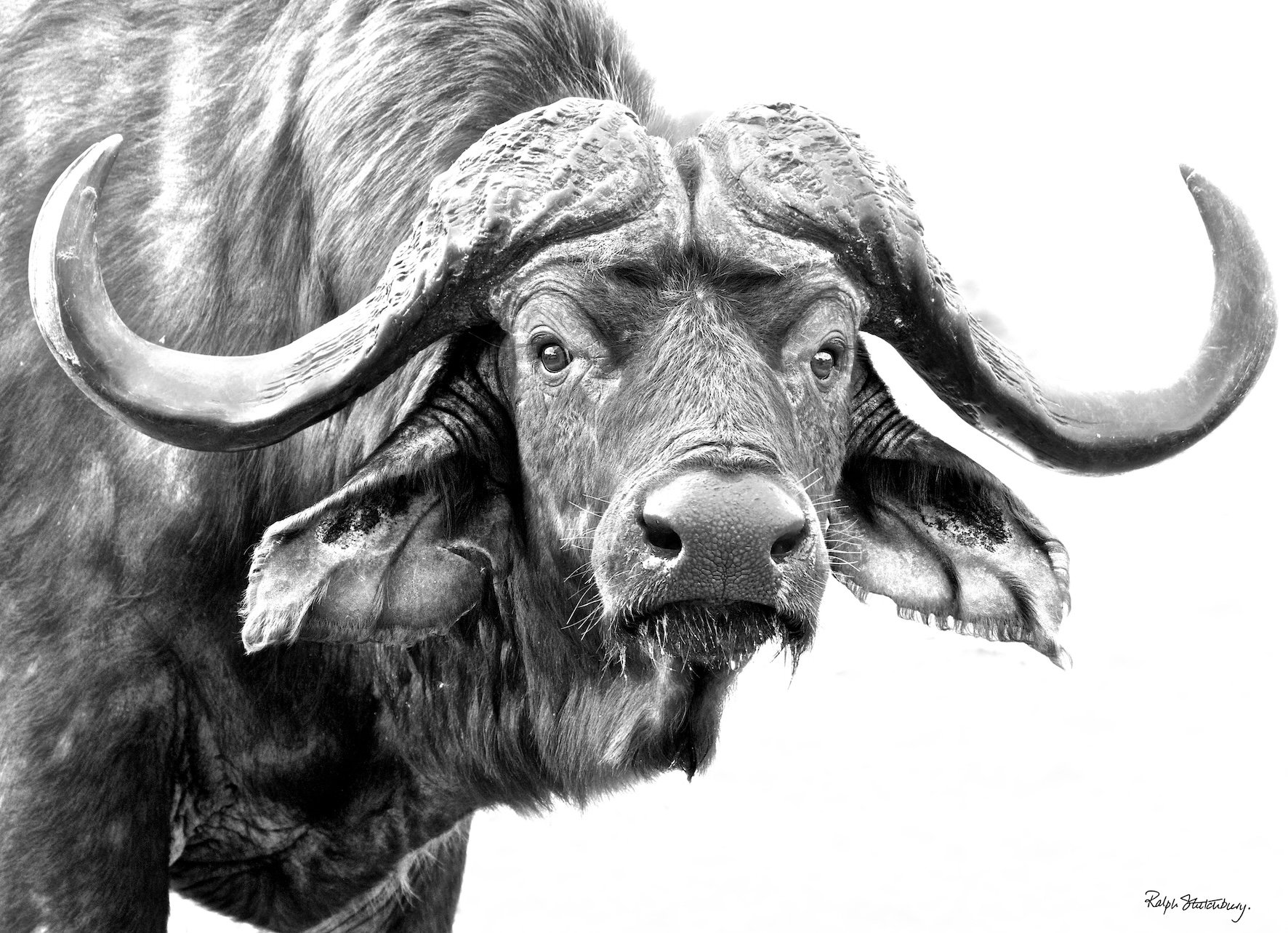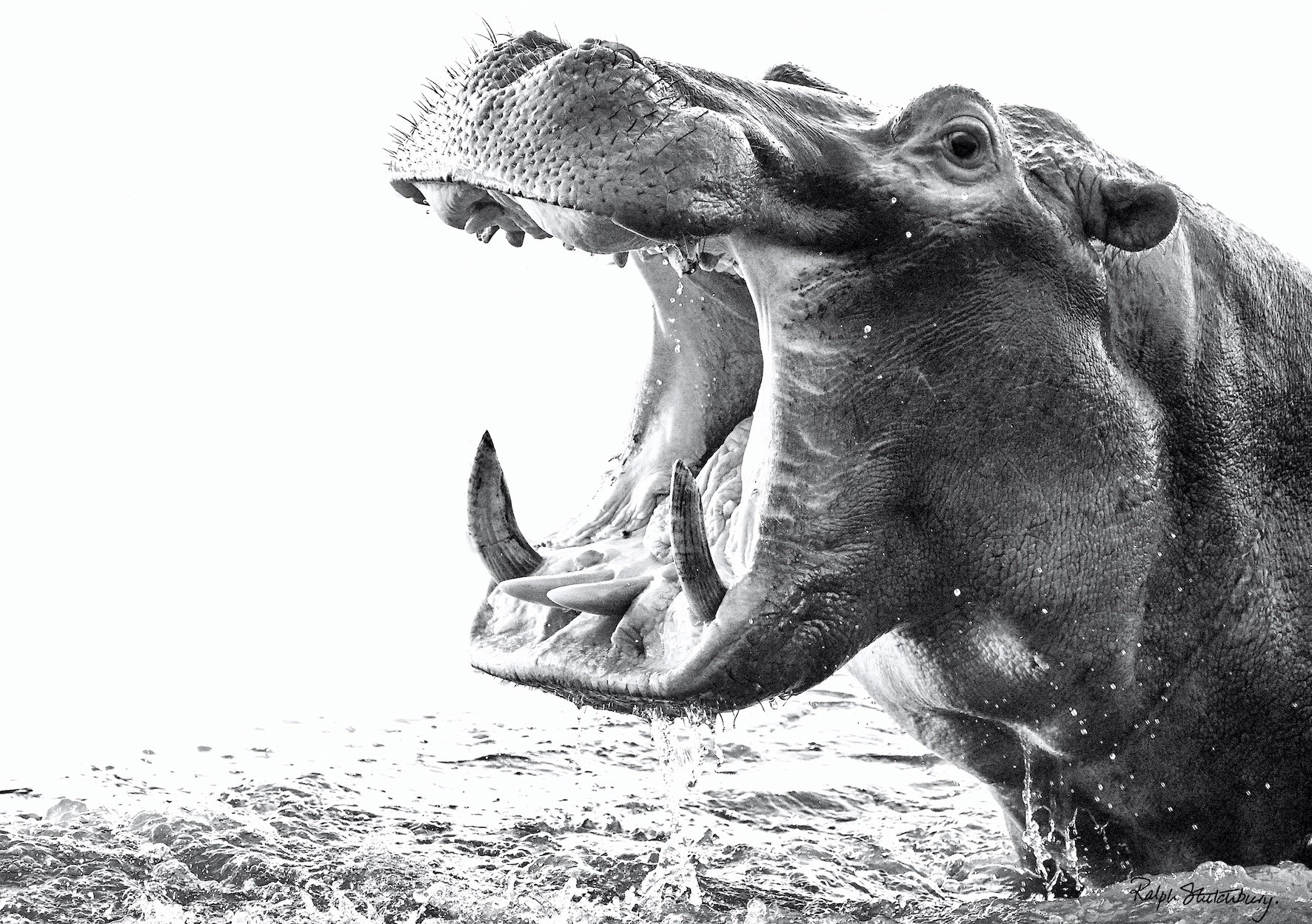Black & White
Leopard behind tree
Stutchbury’s black-and-white photography transforms moments into timeless works of art. By stripping away colour, his images focus on texture, contrast and emotion, highlighting the raw beauty of his subjects. Each photograph tells a powerful story, offering a bold yet minimalist aesthetic that complements any home or office decor. Stutchbury's work is more than art; it’s a conversation piece, perfect for those who appreciate sophistication and the essence of nature distilled into its purest form. Owning one of his prints means bringing a piece of timeless artistry into your space.
Elephant herd on the move
This iconic picture of a matriarch and her breeding herd moving across an open plain was taken in Gonarezhou, the Place of the Elephants, in Zimbabwe.
Zebra herd at the waterhole
Zebras are naturally skittish when approaching waterholes, because the surrounding area is often prime hunting grounds for predators. Their heightened alertness and constant scanning of their surroundings make capturing them in such a vulnerable moment a rare achievement. It takes a lot of patience, perfect timing and luck, freezing a fleeting moment.
Two zebras, tail blowing in the wind.
Zebra stripes are like fingerprints. No two zebras have identical stripes. What we have seen, very surprisingly, was a female zebra at Kennedy 1 in Hwange who had a lot of spots on her back, much like the one you can see on the left front leg of the zebra in the background.
Zebras are virtually all plump and look very sleek, is our observation
The much-underrated Impala is a unique species of antelope, scientifically known as Aepyceros melampus. Impalas are the sole members of their genus, making them distinct in the animal kingdom. They are known for their elegance and agility, and are largely taken for granted due to their numbers and because they are ubiquitous.
Impala girl close-up
Kubu Island Baobab
The photograph of this icon of the African savannah was taken on Kubu Island, a breathtaking, rocky granite outcrop located in Botswana, in the vast expanse of the shimmering silver Makgadikgadi Salt Pans, the remains of an ancient super lake.
Kudu bull
Occasionally, Kudu bulls lock horns in contests for females, to the extent that they are unable to untangle themselves and so it becomes a battle resulting in the death of both contestants.
The king of the savannah, large male lions rely very much on the ability of the females in the pride to hunt. Although the range where lions occur has been drastically curtailed across Africa, they still thrive in protected areas and national parks, truly emblematic of the African Bush.
Male lion close up
Lionesses are known for their fearsome maternal instinct and hunting prowess. When at close proximity to a lioness that is focusing its gaze on you, those yellow eyes are terrifying.
Lioness with yellow eyes
Wild dog red eyes
With their stunning mottled coats and unmatched hunting skills, these endangered predators embody the spirit of cooperation and resilience. Every member of the pack has a role, from caring for pups to sharing the spoils of a successful hunt. Unlike many predators, wild dog alphas lead through cooperation rather than dominance, rarely showing aggression toward other pack members. Together, they thrive in the wild.
Although categorised as felines, cheetahs cannot fully retract their claws and they don’t roar. They are, however, the fastest land animals and can accelerate from 0 to 60 mph in just three seconds.
Cheetah from the back
Himba girl
Part of the larger Herero tribe, the Himba are nomadic herd people living in the remote Koakaveld of Namibia.
Rejecting the demands of German settlers to adopt Western clothing in the early decades of the twentieth century, Himba people have stuck to their traditional attire.
Young Himba wife
To the Himba people, hairstyles are indicative of status: girls have two pigtails facing forwards whereas boys only have one. Married women wear crowns made of goatskin. Bachelors usually shave most of the hair, leaving the hair on top of the head to grow into a long braid, which is worn down their backs.
Two Himba women
Zebra and foal
After a gestation period of 12 months, single zebra foals are born. They can stand and walk within minutes of being born, which helps them to escape predators.
Docile, gentle souls, giraffes are synonymous with the African savannah. This is a picture of a young giraffe. How do we know? Because he still has fluffy horns.
Giraffe with fluffy horns

